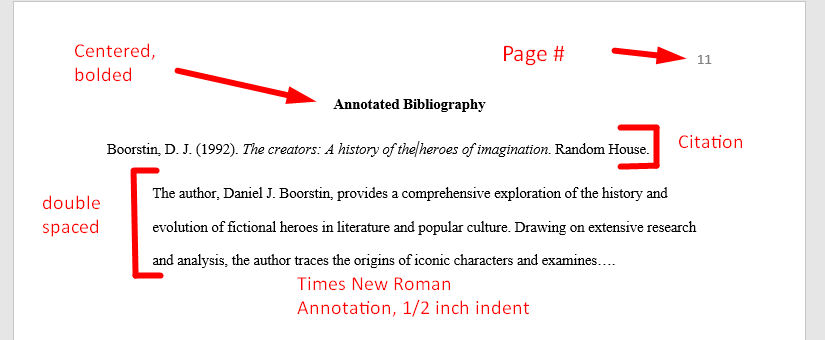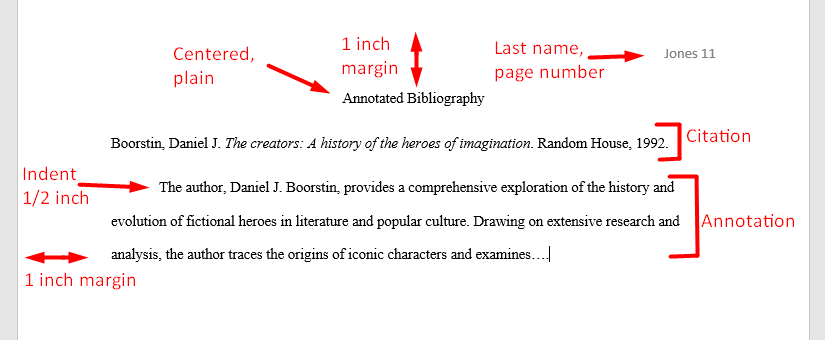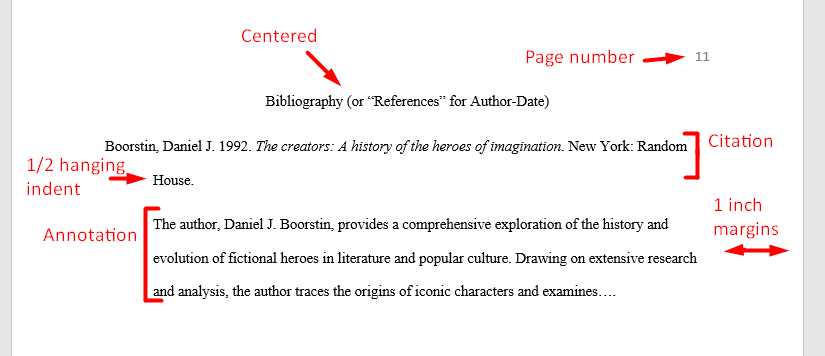
Bibliographies are the backbone of academic research, providing a roadmap to the citing sources that shape scholarly discourse. Assembled with precision, and care, they not only acknowledge intellectual debts, but also offer pathways for further exploration. In this article, we delve into the significance of bibliography, exploring its role in guiding researchers through the labyrinth of knowledge.
Definition: Bibliography
A bibliography is a comprehensive list of sources, such as books and websites, that have been consulted or cited in a particular work. It serves as a reference list, providing readers with information about the sources used by the author, and allowing them to locate and verify those sources. Typically, they include detailed information for each source, such as the author’s name, title, publication date, publisher, and page numbers.
There are three major style guides, when it comes to citation: the APA citation style (American Psychological Association), MLA citation style (Modern Language Association), and Chicago style of citation. These include analytical bibliographies, enumerative bibliographies, and lastly, annotated bibliographies.
The term “bibliography” is generally used for any list of sources cited at the of an academic work. Some style guides refer to them using particular terminology. MLA format refers to it as a Works Cited page. Whereas, the American Psychological Association refers to it as an APA Reference page.
in Your Thesis
Basic Bibliographic Entries
Entries for each source cited or consulted, are listed in alphabetical order. Each entry includes essential bibliographic details such as:
- Authors or editors
- Title of the work
- Publishing date
- Publisher
- Relevant page numbers
Types of Bibliographies
There are three common kinds of bibliography, each serving different purposes and focusing on various aspects of research and scholarship:
- Analytical
- Enumerative
- Annotated

Analytical
Analytical bibliographies go beyond simple description to analyse the content and structure of works. They include variations between different editions, each work’s number of pages, information concerning the booksellers and printers, paper and binding descriptions, and any insights that unfold as a book evolved from a manuscript to a published book. They are used by researchers interested in the history of books and printing.
Elements:
- Details about each source, including the author’s name, publication title, etc.
- Analysis focusing on textual evidence, editorial decisions, etc.
- Explanation of the purpose and goal of the bibliography.
- Historical context on the source’s production, including printing technology etc.
- Comparison with other editions or versions, highlighting textual variations etc.
Annotated
Annotated bibliographies include brief summaries or annotations of each source listed alphabetically, in addition to bibliographic information. This type provides an outline of the content and quality of the source, helping researchers evaluate its relevance for their own work.
Elements:
- Details about each source, including the author’s name, title, etc.
- Brief summary (2-4 sentences) of the main points and arguments of each source.
- Assessment of quality, reliability, relevance, and credibility.
- Explanation of why the source was chosen and who it is intended for.
- Explanation of how the source relates to the research topic or question.
Enumerative
Students writing research papers commonly use enumerative bibliography. It is the most basic type, where the writer lists all sources used, providing bibliographic details for each work. Those sources share common characteristics such as language, topic, or period of time. Information concerning the source is then given by the writer to provide directions to the readers towards the source.
Elements:
- A list of sources including details of the author’s name, title, etc.
- Method of organising the bibliographic entries, such as alphabetical by author, etc.
- Description of the scope, including and specific criteria used to select or exclude sources.
- May include annotations providing further information, such as evaluations or summaries.
Analytical Bibliography
There are several distinctions for the analytical type. Three of them will be explained below.
Critical analytical bibliographies analyse the significance and meaning of textual variations. They may examine the implications of editorial decisions or printing errors on the interpretation and reception of a work. They often engage with literary theory, textual criticism, and scholarly debates. By critically examining the production history of a work, critical analytical bibliographies aim to shed light on the intentions of authors and editors, as well as the cultural and social contexts in which works were produced.
This analysis includes the following features:
- Providing textual analysis on variations, changes, and decisions
- Offering contextual information about the cultural, social, or political milieu
- Identifying differences, similarities, and unique contributions with other works
- Assessing the scholarly significance and impact of the work
Focus on providing detailed descriptions of the physical characteristics of books and printed materials. They aim to analyse aspects such as typography, binding, paper quality, illustrations, and textual variations. By documenting these features, descriptive analytical bibliographies facilitate the identification of different versions of a work, helping others trace the history of printing and publishing processes.
This analysis includes elements such as:
- Detailed description of physical characteristics
- Documentation of textual variations and discrepancies
- Analysis of editorial decisions or interventions
- Examination of printing history
- Comparison with other editions or versions
Historical analysis examines the production history and reception of relevant materials within their context. This involves studying factors such as printing technology, publishing practices, censorship, and readership. It aims to uncover the cultural, political, and intellectual significance of printed materials, shedding light on their roles in shaping historical developments and cultural movements.
This analysis generally outlines:
- Contextualization within historical, cultural, and social frameworks
- Documentation of publication history and evolution over time
- Analysis of reception and impact within historical context
- Examination of editorial practices and textual transmission
- Assessment of cultural, political, and intellectual significance
Annotated Bibliography
There are a few distinctions for the annotated bibliography type. Three of them will be explained in the following paragraph.
Critical annotations evaluate the strengths, weaknesses, and overall significance of the source, considering factors such as methodology, empirical evidence, authority, and bias. Critical annotations may include both positive and negative comments, and provide readers with insights into the credibility and usefulness of each source, helping them make informed decisions about its inclusion in their research.
This annotation may include the following elements:
- Examining the author’s bias or tone
- Evaluating the author’s qualifications
- Verifying the accuracy of the information
- Comparing the work with other publications on the topic
- Assessing the significance of the work’s contribution
These annotations provide a concise summary of the source’s content, focusing on key points and findings. Descriptive annotations aim to give readers a clear understanding of what the source covers without offering evaluation or critique. They are commonly used to provide basic information about each source listed in the annotated bibliography.
This annotation typically outlines:
- The primary objective of the work
- The contents covered in the work
- The conclusion drawn by the author
- The target audience
- The research methods employed by the author
- Distintice elements within the work, such as illustrations and tables.
Informative annotations serve as a hybrid between descriptive and critical ones, providing both a summary and evaluation of the source’s content. This type aims to inform readers about the key aspects, while also offering insights into its strengths and weaknesses. Overall, informative annotations aim to strike a balance between providing descriptive information and offering critical insights.
An informative annotation comprises the following aspects:
- Summary of the source’s content and message
- Includes the hypothesis, methodology, main points, and conclusion
- Does not offer editorial evaluative comment on the content.
Enumerative Bibliography
There are different types of the enumerative bibliography. Three of them will be explained down below.
This type of bibliography aims to provide an exhaustive list of works on a particular subject without imposing strict selection criteria, offering researches a comprehensive overview of the literature available.
This specific type may include the following elements:
- Comprehensive coverage of relevant literature
- Emphasis on inclusivity, striving to list all known and available sources
- May include annotations or descriptive notes for further information about each source
- Regularly updating and maintaining the bibliography to ensure currency and relevance
The selective enumerative type includes only a subset of the available literature on a topic. It focuses on key works, seminal text, or authoritative sources based on specific criteria, Unlike comprehensive ones, selective bibliographies prioritize quality over quantity, offering users a curated selection of the most important and influential works within the subject area.
It typically outlines these elements:
- Clearly defining the criteria used to select sources
- Carefully curating a selection of sources
- Excluding sources that do not meet the specified criteria
- May include evaluative annotations or commentary to justify the selection
- Providing guidance to users on how to effectively use it
The subject-specific enumerative type focuses on compiling sources related to a specific subject, catering to the research needs of practitioners, students, and scholars within that domain. They are tailored to the needs and interests of users within a particular specialization.
A subject enumerative comprises the following aspects:
- Organized according to the subject area, facilitating easy access of resources
- Coverage of a broad range of topics within the chosen subject area
- May include thematic categorization or subheadings to further organise it
- Tailored annotations, offering insights into the relevance of each source
Bibliographic Formats
Bibliographies can be formatted in various styles, each with its own set of guidelines for organising and presenting bibliographic information. In this format, we will provide you with the three most common formats, as well as examples for each.
APA Format
When writing bibliographies (references) using the APA format, the following steps should be observed:
- At the end of the paper on a new page, “References” entitled with center-alignment.
- The references themselves should be left-aligned.
- Subsequent lines need a hanging indent of 1/2 inch.
- Only use the author’s full last name and the initial of the first (and middle) name.
- If there are multiple authors, the names are separated with an ampersand (&).
- Place the date in brackets.
- Italicize the title of the source material & use sentence case.
- For websites, use the full URL.
The image below contains an example of an annotated bibliography in APA format.

MLA Format
When writing a bibliography (Works Cited) using MLA, it appears in this format:
- Start “Works Cited” list on a new page with center-alignment.
- If you add a Works Consulted list, start it on a new page after Works Cited.
- Each source is left-aligned.
- Subsequent lines need a hanging indent of 1/2 inch.
- Alphabetize your sources, usually the author’s last name.
- Full name of the author, last name is mentioned first.
- Remove the https:// of the URL.
The image below illustrates an example of an annotated bibliography in MLA format.

Chicago Style Format
Here are some general notes on writing a Chicago Style bibliography:
- “Bibliography” or “References” in center-alignment.
- Before the first entry, add two blank lines.
- Left-align each entry, 1/2 hanging indent for each subsequent line.
- Single-space entry, with a blank line between each.
- Include the full URL.
The image below serves as an example of an annotated bibliography in Chicago format.

FAQs
A bibliography generally entails the listing of books, articles, websites, and other study materials used to compose a piece of academic writing or literary work. It typically appears at the end of the document and provides readers with detailed information about each source, allowing them to locate and verify the information used by the author.
A bibliography should include
- The authors’ names
- Title of the work
- Date of publication
- Name of publishers and publisher city
- If there are multiple volumes or editions, add page number
- URL if required
“Works Cited” is a specific term used in MLA citation to refer to a list of sources cited directly in the text, whereas a bibliography includes sources that were consulted, but not directly cited.
The exact method and formatting required, will depend on the referencing style that your institution uses.
APA: Last Name, First Name Middle Name. (Publication Date). Title. Publisher. URL.
MLA: Last Name, First Name Middle Name. Title. Publisher, Date. URL
Chicago: Last Name, First Name Middle Name. Date. Title. City of Publication: Publisher. URL
There are three main types of bibliographies. Check with your institution which method you’re required to use. This may depend on the referencing and citation style you’re using, as well as your field of research.
Analytical: Includes information and new insights that come to light as the book or research paper progresses.
Annotated: Outlines the research that was conducted and provides feedback on specific sources.
Enumerative: A list of sources in a particular order.
